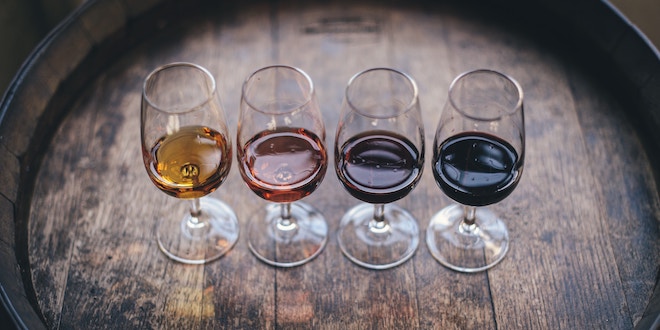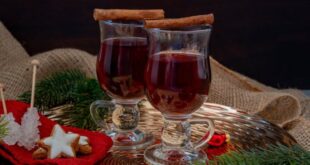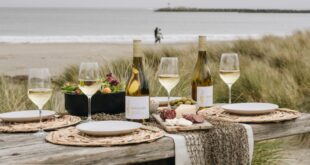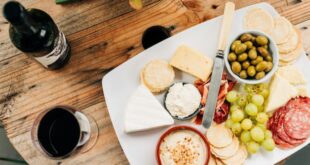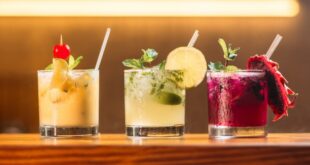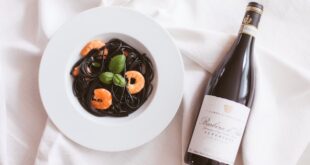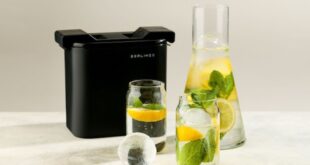Last Updated on October 4, 2023
Attending a wine tasting can be an exciting way to expand your knowledge and appreciation of wine. However, to get the most out of the experience, it helps to prepare your palate for a wine tasting in advance. It will allow you to discern better the subtle flavors and aromas in the wines you sample. With the proper preparation, your taste buds will be ready to savor and compare various wines fully.
Avoiding Strong Tastes and Smells
In the days leading up to a tasting, avoid foods with robust flavors or scents that tend to linger on the palate. These include spicy foods, namely curry, chili peppers, wasabi, ginger, garlic, or onions. The intense flavors of spicy foods can overpower your taste buds for hours. Steer clear of these offerings before you need to evaluate wine carefully. Raw garlic and onions have lasting aromas that clash with detecting delicate wine bouquets. Avoid eating them whole in the 24 hours preceding your tasting. Minced or cooked garlic and onions are gentler options. Pungent cheeses like blue cheese can coat your mouth with a fatty film that blocks wine flavors. Skip the stinky fromage to keep your palate clean. Milder cheeses are great options.
Eating Neutral Foods
Instead, select neutral foods that won’t distort your palate before tasting wine. Plain crackers, bread, and toast allow you to line your stomach while avoiding strong tastes. Simple poultry, beef, fish, or pork preparations are mild choices. Avoid heavy sauces or rubs. Carrots, celery, cucumbers, or bell peppers make healthy unadorned picks. Dip sparingly with mild hummus or ranch dressing. The key is enjoying these foods simply prepared, without heavy spices, oils, or other additions that could interfere with your wine discernment. Keep it basic.
Drinking Plenty of Water
Hydration is key for having a sensitive palate. Drink ample water leading up to your tasting to moisten your mouth and prep your taste buds. Water washes away lingering flavors or smells that could muddle new wines. Aim for at least 64 ounces spread throughout the day. The added perk of proper hydration is that it reduces the effects of alcohol absorption if you swallow a bit of wine at the tasting. You want to taste – not drink – the wine samples, so water helps limit intoxication. Sipping mineral water between wine samples also cleanses your palate. The bubbles remove residual tastes, hitting the reset button on your tongue for the next pour.
Understanding Wine Terminology
Familiarizing yourself with basic wine vocabulary will help you accurately describe various wine components. Common terms include:
- Tannins: The naturally occurring compound that creates a puckering or astringent feel, especially in reds. Tannins come from skins, seeds, and stems during wine fermentation.
- Acidity: Tart, crisp, bright qualities in a wine. A key component that gives whites and rosés a refreshing flavor. Acidity balances sweeter elements.
- Body: Describes how heavy and full-bodied glass of wine feels on the palate. A robust red often has a full body, while many whites are lighter.
By understanding these core concepts, you can better articulate your impressions during a tasting. Study other descriptive wine terms as well.
Practicing Wine Tasting Techniques
Tasting room experiences make wine more accessible. Note the color and clarity of the wine, which offers clues before you even take a sip. Tilt your glass to see the wine’s legs and viscosity. Swirl the wine, then deeply inhale the aroma. Try to detect fruit, floral, earthy, or oaky notes that indicate the wine’s bouquet. Take a small sip, chew slowly, and aerate the wine inside your mouth to perceive the full taste. Swallow or discreetly spit the wine. Repeating this routine helps develop your diagnostic skills to identify subtle distinctions between wines. A great way to learn is to visit reputable wineries, such as Temecula wine country in Southern California. Temecula wine tasting is a one-of-a-kind experience, that should be on your bucket list.
Comparing Wines
Wine tastings offer the chance to contrast different vintages and varietals side-by-side directly. Seize this opportunity by sampling several wines thoughtfully: Taste comparable wines – such as two Cabernet Sauvignons – next to each other. Switch back and forth to detect flavor, aroma, acidity, and texture differences. Make mental or written notes comparing the wines’ attributes. Do you notice one as fruitier? Smoother? Earthier? Sharper? Tracking differences will refine your discerning palate. Pay attention to aftertaste. One wine may finish clean and mellow, while another lingers tart on your tongue. That is the hallmark of an inexperienced versus expert taster.
Experimenting with Food Pairings
The right food can enhance your wine, just as the right wine complements food. Explore combinations at home to excite your palate: Find foods that accentuate certain wine traits. For example, salty cheese can soften rough tannins in a red or make buttery Chardonnay taste even richer. Likewise, pair sweet wine with spicy dishes to balance the heat. Acidic wine cuts through fat and creaminess. These smart pairings improve the taste of both wine and food. Get creative mixing and matching dishes with wines. Be adventurous to see what flavors excite your palate. You may find surprising new favorite pairings.
Conclusion
Preparing your palate and wine knowledge before a tasting enables you to engage with the experience fully. Avoid overpowering tastes, focus on wine terminology, practice tasting techniques, and compare wines thoughtfully. It creates the perfect foundation to advance your wine journey. Allow your curiosity and taste buds to guide you as you continue learning. Soon you’ll expertly discern subtle flavor nuances that seduce your palate and discover new favorite vintages and varietals. With a refined, well-prepared palate, your wine-tasting experiences will prove educational and delicious.
You may also like:
12 Tips for Your First Wine Tasting Experience
5 Best Spanish Red Wines From A Online Beverage Store
5 Best Italian wine regions you need to taste
 Travel for Food Hub The Food Blog for Travel Lovers
Travel for Food Hub The Food Blog for Travel Lovers

